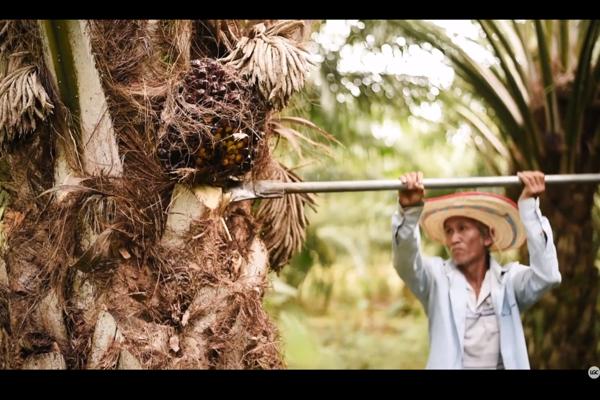Earth Day: How to use science to protect our environment
Today is the 51st annual Earth Day, a global cause which started in 1970 to celebrate the environment and focus efforts to protect it. People around the world are joining the action with the Global Youth Summit, Hip Hop Caucus and more, including events to educate people on the effects of climate change and sustainability.
In the past 40 years there has been a 68% fall in monitored populations of mammals, birds, amphibians, reptiles and fish and, since 1880, the average global temperature on Earth has increased more than 1°C.
Science sits at the forefront of the fight to protect the environment, and it is science, the process of gathering evidence and building our knowledge of our world based on that evidence, that will drive us forward to find innovative and sustainable solutions.
Our own mission of 'Science for a safer world' doesn't just stop with consumer trust and improving diagnostics and pharmaceutical development, but extends to support environmental efforts to protect the earth. Read on to learn about some of these case studies where our research was used to develop solutions to environmental problems.
Helping our customers reduce their impact:
Our work in the genomics field also contributes to positive environmental impact. Palm oil is an edible oil that's found in nearly half of packaged goods in supermarkets. Due to its high demand, farmers are under pressure to increase yields and agricultural production, which risks detrimental impact on the environment.

LGC, Biosearch Technologies partners with palm oil producers to sustainably improve farming productivity through marker-assisted breeding. When using marker-assisted breeding technology, farmers can select which plants to breed because they will have a better understanding of which plants have biomarkers for things like higher yield, drought resistance and others. By doing this, they can use land more efficiently to meet the same demand, reducing their land usage. Watch our video on this project here.
On another note, the oKtopure, a robotic instrument designed by LGC, Biosearch Technologies to extract DNA from plant samples at a high throughput, uses a wash station which enables the re-use of oKtopure tips up to 40 times. This cuts down on consumables usage by up to 50%.
Similarly, the Array Tape Platform requires seven times less plastic, 80-90% less reagent and 11-35 times less energy.
Supporting the plant-based economy:
Our teams are helping build customer confidence in plant-based foods as part of the transition to a low carbon economy, for instance BRCGS' new Plant-Based Global Standard.
Animal agriculture has been recognised as one of the largest contributors to climate change, accounting for up to an estimated 25 percent of greenhouse emissions in some parts of the world. Agricultural practices can increase nitrogen levels in the soil, resulting in nitrous oxide (N2O) emissions, while livestock produce methane (CH4) as a result of their digestion, and still other practices release carbon dioxide (CO2). Therefore, many people are taking the step to reduce their own carbon footprint by consuming more plant-based foods.
BRCGS provide guidance and support to food producers on producing authentic and reliable plant-based foods, so that consumers around the world can trust their food.
Research supporting environmental legislation:
Mercury (Hg) is a naturally occurring element, found in soil, water and air. It is also one of the most toxic metals, and exposure can affect the nervous, digestive and immune systems.
To protect human health and the environment from its adverse effects, European and global directives, like the Minamata Convention, ensure mercury is closely regulated. The industrial sector is one of the main causes of mercury pollution, with mercury being released in gaseous form in to the atmosphere. Systems to continuously monitor mercury emissions, including the more reactive species oxidised mercury Hg(II), are installed in stacks. These are calibrated using standardised mercury solutions to give accurate results about the mercury content at the source of emission (e.g. power plants and cement factories).
However, little data exists on the purity of these solutions and the mercury salts that are used in their preparation. Even at a very low-level, impurities within the salt could potentially affect the calibration of the gas standard generators over time and compromise the monitoring system. This could lead to inaccurate mercury readings and potentially more mercury being released in to the atmosphere than is safe.
Our scientists within the National Measurement Laboratory at LGC used their experience in inorganic purity and speciation analysis to develop a broad screening approach for elemental impurities of more than 70 elements in mercury salts using inductively coupled plasma tandem mass spectrometry (ICP-MS/MS). A paper published last year, written in collaboration with PS Analytical Ltd and National Metrology Institute VTT MIKES in Finland, shows a potential new method to significantly improve the reliability of mercury measurements from gas generators to support improved environmental monitoring.
Our new partnership with the Coalition for Rainforest Nations:
We are very pleased to welcome Coalition for Rainforest Nations to be our corporate charity partner for the next two years. CfRN assists tropical governments, communities and peoples, to responsibly manage their rainforests. Healthy rainforests protect against a changing climate, generate needed biodiversity and provide safe habitats.
CfRN support rainforest nations to build strong policy to fight deforestation and preserve rainforests, as well as provide training and help drive finance to countries for Paris Agreement-compliant carbon reductions.
